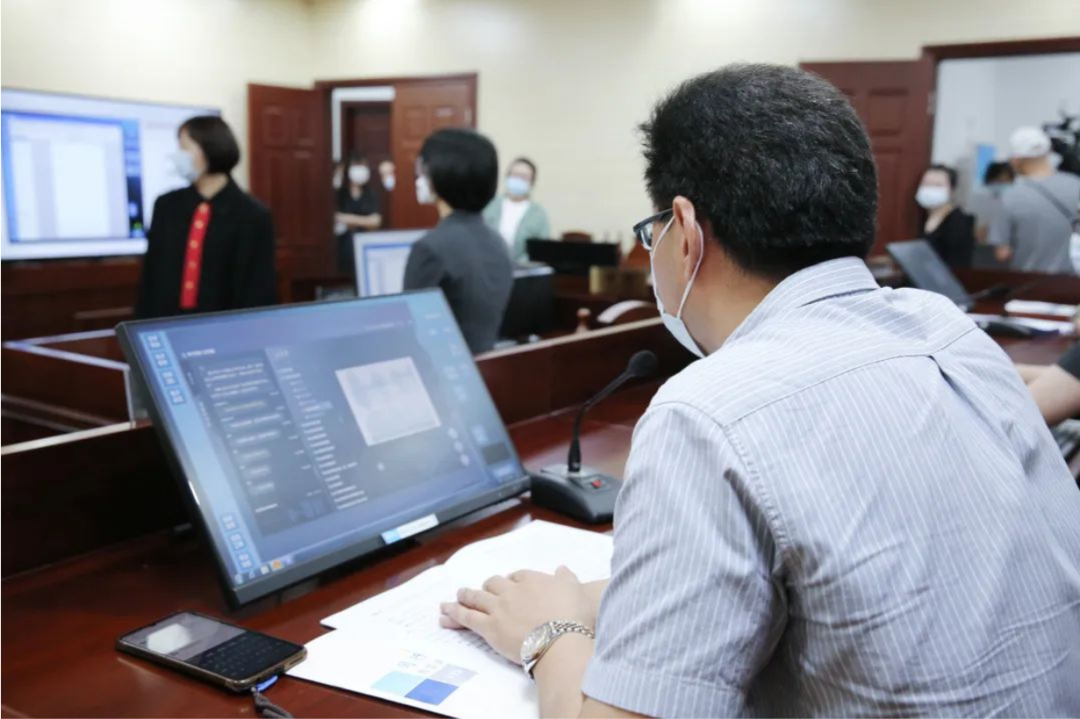
Article Overview
1. After the court recording reform, how to participate in court proceedings correctly?
1. Maintain a quiet environment
2. Follow court instructions
3. Stay close to the microphone
2. Using “voice recognition” to record court proceedings, how to improve accuracy?
4. Clear phrasing
5. Clear references
6. Read numbers clearly
7. Translate foreign languages
3. How to effectively express opinions, to enhance court efficiency?
8. Structure arguments with focus
9. Submit written opinions
10. Reuse signatures
After the court recording reform
How to participate in court proceedings correctly?
01
Maintain a quiet environment
The court recording reform utilizes intelligent voice recognition technology, which requires a high standard for the environment. All parties involved must maintain silence in the courtroom. Whether inside or outside the court, loud talking or noise should be avoided.
Personal devices such as mobile phones and laptops should be set to silent and placed away from the microphone to prevent signal issues that may affect audio and video recording.
Observers should also adhere to this rule and refrain from speaking or making noise.
02
Follow court instructions
In court proceedings that utilize the reform method, following court instructions and adhering to the order of speaking is significantly more important than in traditional court. If a party does not comply with court instructions and disrupts others, it can lead to misinterpretation and ambiguity.
If a party needs to speak at an unexpected moment, they should raise their hand to request permission and write down their thoughts on paper. The court will arrange a speaking opportunity at an appropriate time. If interruptions occur, the interrupted party should restate their complete sentence instead of continuing from where they were interrupted to avoid confusion.
03
Stay close to the microphone
Parties involved should check the screen before the court proceedings to confirm whether the microphone is on. If there are any issues, they should promptly inform the judge or clerk for resolution.
In proceedings utilizing the reform method, the microphone is a crucial tool, so parties should try to stay close to the microphone before each speaking turn. The microphone’s position can be adjusted, allowing participants to move closer to it. Once the microphone is set, participants should not change positions or microphones.
If there are multiple microphones at the seat, there is no need to point multiple microphones at oneself. If it is not your turn to speak, you may move away from the microphone.
When others are speaking, if discussion is needed, keep away from the microphone.
Using “voice recognition” to record court proceedings
How to improve accuracy?
04
Clear phrasing
During court proceedings, speech should be clearly phrased. There should be appropriate pauses at the end of sentences and not prolonged pauses in the middle of thoughts, as this can mislead the system and affect transcription accuracy. The system may have slight delays but maintains integrity, so participants should not continue speaking immediately after the transcription is complete.
05
Clear references
Identifying names is a weak point in the court recording reform system, but using clear reference terms such as appellant, respondent, plaintiff, defendant, etc., can significantly improve transcription clarity and understanding.
Additionally, if a party has established shorthand references, they can inform the court beforehand to set hot words to help the system improve transcription accuracy.
06
Read numbers clearly
When reading numbers, there is no need to specify the digit places. For example, 12,345.68 should be read as: one two three four five point six eight. This applies to case numbers, request numbers, and logical sequences; reading numbers sequentially leads to excellent transcription results.
07
Translate foreign languages
During court proceedings, participants should speak in Mandarin. Currently, the court recording reform system can only recognize Chinese and cannot process other languages. If it is necessary to state words in other languages, it is advisable to provide a brief explanation of the meaning in Chinese before or after the statement to avoid ambiguity.
How to effectively express opinions
to enhance court efficiency?
08
Structure arguments with focus
Before expressing opinions, participants should clarify the key points and determine the structure of their statements, focusing on layered arguments. Practice has shown that directly explaining the logical order, stating key points, and clearly articulating opinions can significantly enhance the readability of the transcription. Using sequential words like first, second, third, etc., can indicate the beginning and end of the semantic content for the court recording reform system.
09
Submit written opinions
When preparing written opinions, participants can provide key hot words to the court. Written opinions should be submitted to the judge’s assistant or clerk before the court session, with hot words indicated. Effectively inputting hot words before the session can proactively assist the court recording reform system and enhance transcription accuracy. If the transcription does not meet expectations after the session, written opinions can also be submitted to clarify relevant content.
10
Reuse signatures
Before the court session starts, all parties typically sign the “Notice and Confirmation of Audio and Video Recording Replacing Court Transcription”.
After the court session ends, a signature is required on the system-generated “Metadata Table”. Signature methods vary by court; for example, in Shanghai’s First Intermediate People’s Court, the signature board is set up at the clerk’s seat, and the judge’s assistant or clerk will arrange for orderly signatures after the session. If parties agree to “reuse signatures,” they can leave the court directly after the judge announces the adjournment, thus improving efficiency.
Further Reading
What is the court recording reform?

